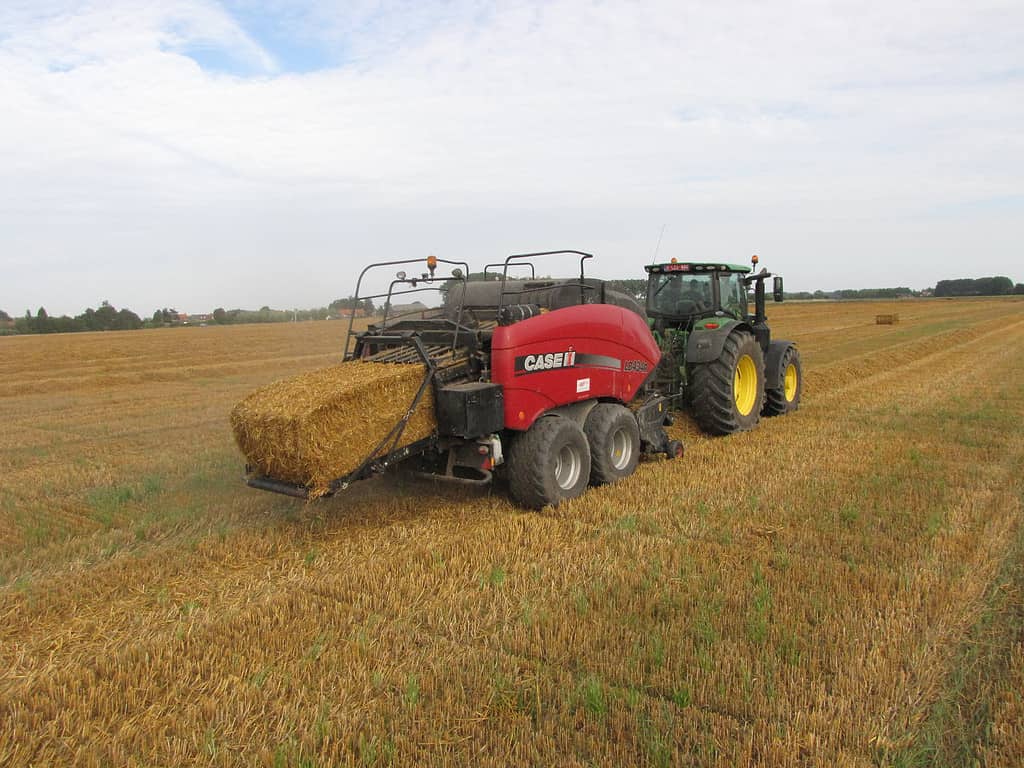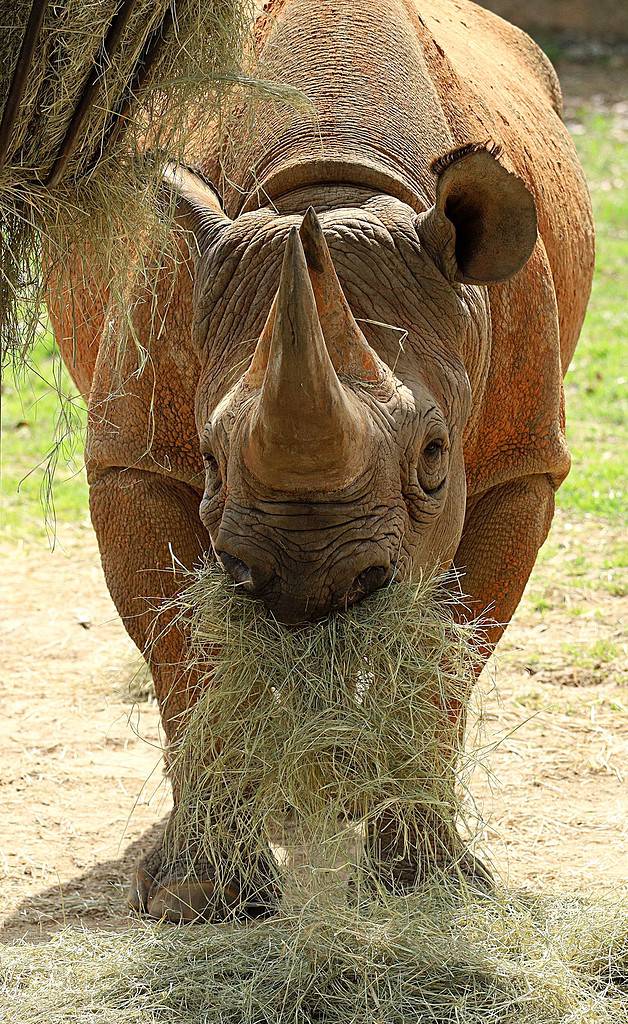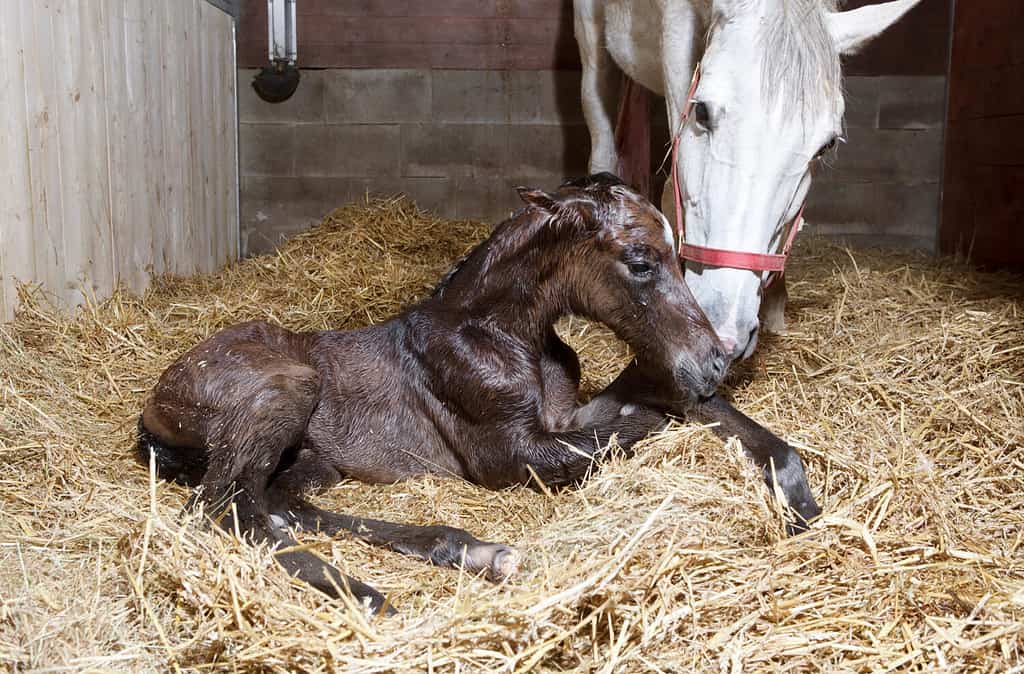If you’re not in the farming world or don’t have a cute little guinea pig or rabbit to take care of, straw and hay may just sound like synonyms. But when you have livestock to care for, gardens to tend to, or even specific décor you love, you quickly learn that hay and straw are not the same. Discover the differences between straw and hay and learn the best uses for each!
Straw vs. Hay: What Is the Difference?
Straw and hay may look the same at first glance, but a deeper look reveals differences in their appearance. They’re made differently and they are used differently. For instance, hay starts from dried grass or even legumes. On the other hand, straw starts as green stalks. Horses eat hay but they’re not into yellowish hollow straw. Hay as animal feed works beautifully but straw is typically used differently. Although it can be fed to animals, straw works excellently as bedding or mulch.
Hay refers to dry cereal crops. When it’s high quality, you can identify stalks and seed heads. The leaves of hay are green. For animals that live in a limited pasture, this is a great supplement they can consume. There are a couple of different types of hay but some of the most common ones are Bermuda, Timothy, alfalfa, and fescue. Farmers produce hay in the same way, no matter the type. Once their crops have seeds, they harvest the grain crops, cut them, and dry them to create hay.

Straw is a golden color and not nearly as nutrient-dense as hay.
©iStock.com/Angelique Nijssen
Straw comes from green crop harvest. When the grain and chaff are no longer attached, you’re left with the dry stalk. Unlike hay, straw is more of a golden color. Different types of straw include barley, rye, oats, rice, and wheat straw. Depending on the type of straw, you have different options when it comes to uses. Typically, when only the dry stalks are left, they are packed together and secured with twine. The grain, once removed, can be fed to animals. However, it is suitable for human consumption as well!

Hay is a great source of sustenance for many animals.
©Lilly P. Green/Shutterstock.com
Stray vs. Hay: and Best Uses of Each
Straw
Animal Feed
Straw is unappetizing for horses. However, sometimes it’s used as cattle feed. It doesn’t have a high nutritional content the way hay does so it should never be livestock’s primary form of sustenance. It’s not easy to digest but it is high in fiber.
Bedding
Mostly, animals love laying on straw, so it is often used for bedding. It’s convenient for those who care for animals because you can quickly replace it and still make use of the old, used straw. You can add a couple of nutrients to your compost! Overall, it’s comfortable for animals, and it’s absorbent, keeping their space cozy.

Horses enjoy straw bedding but prefer hay for food.
©pfluegler-photo/Shutterstock.com
Decor
Straw bales can also serve as décor outside your home. This works particularly well in homes with a rustic design. During the fall season, you can set up a couple of pumpkins as well to complement the straw bales. If you’ve been to a farm or an outdoor fair, you’ve probably seen straw set up as décor that doubles as seating!
Mulch
Straw is a gardener‘s friend. The bale itself can actually serve as your garden. You can use fertilizer and plants emerge from the bale! You can also use it as garden mulch. It helps to insulate the soil and keep the roots warm when temperatures cool in the evening hours. If you live in a dry environment, straw helps to retain moisture, which benefits your plants.
Hay
Animal Feed
The sole purpose of hay is to feed animals. It could be livestock, or it could even be pets you keep inside the home like rabbits and guinea pigs. Between hay and straw, hay has more nutrients and contains seeds. It can be used to supplement the pasture when the quality is low, or it can be fed to livestock and horses year-round. Since hay serves as sustenance, it’s crucial that you are careful to keep it free of dirt, dust, and mold.
Some of the animals that enjoy eating hay include horses, cattle, sheep, and goats. For horses, it depends on their location, but a good rule of thumb is that if it’s too wet or too dry, it’s not good for horses. Cattle are known for their strong stomachs and mature cattle do well with multiple types of hay. Sheep aren’t fans of coarse hay, which means they require a finer, leafier option. Goats love a variety of hay options but like sheep, they don’t like a coarse texture.
Thank you for reading! Have some feedback for us? Contact the AZ Animals editorial team.








